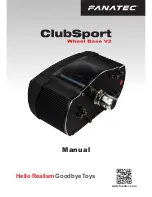MC-1 Service Manual
5-2
VFD Display:
The front panel VFD display is the primary source of information during diagnostics. The exact display
information will depend on the test or tests being executed. When an individual diagnostic test is executed,
the VFD will display the name of that test. Groups of tests, such as during power on diagnostics or burn in
loops, will have a generic message on the top line of the VFD, e.g. DIAGNOSTIC TESTS, when the tests
are being executed. Any failure message will display an E followed by a number that indicates which test
failed.
Front Panel LEDs:
The test number associated with any particular test will also be displayed on the front panel LEDs. The
LEDs will be used in binary format with the MUTE LED as the LSB and the red TAPE LED as the MSB.
Running test number 1 would illuminate the MUTE LED only with all the others off. Running test number 2
would illuminate the BYPASS LED only with all others off. Running test number 3 would illuminate the
MUTE and BYPASS LEDs together with all others off, etc.
If a failure occurs, the red VCR LED is illuminated to indicate the test failure, and the LEDs indicating which
test was running when the failure occurred would also be illuminated. The diagnostics will attempt to
continuously execute the failed test, a test loop, to keep the signal lines active as an aid in debugging the
failure. Due to the MC-1 design of scanning the front panel LEDs, the diagnostics running the test loop, and
reporting the failure once during the loop, the LEDs on time is reduced. This results in the LEDs flickering,
and is normal operation.
Serial Debug Pot:
The Serial Debug Port is available to provide diagnostic status to be viewed on an external PC through one
of the serial ports on the PC. On the rear of the MC-1 is a 5-pin din connector. Pin 4 of the connector is
wired to the serial debug port. Using a terminal or a PC running a terminal program at 19.2kbs, the progress
of the diagnostics can be monitored and test failure information is reported. Also, the error log can be
dumped to the serial debug port, while in EXTENDED DIAGNOSTICS, via the remote
SHIFT/ON
key
combination.
Error Log:
An error log, or ring buffer, containing a log of the last 20, 13h, failures is available. If the error quantity
exceeds 20, additional error messages will be stored at the first location in the buffer (FIFO). The error log
is stored in the non- volatile section of SRAM.
Every failure stored in the error log has 6 parts:
#NN E## tXX aYYYYYY
wZZZZZZ rQQQQQQ
1. #NN: Error Log Number: the error log location number, in hexadecimal. It goes from 00 to 13. Turning
the VOLUME knob clockwise allows one to scroll through all 20 error log locations.
2. E##: Failure Number: the E stands for error and the 2-digit number after the E indicates which test
failed.
3. tXX:
Failure
Type
01 = Address Failure. During an address test the data sent compared to the data retrieved does not
match.
02 = Data Failure. During a data test the data sent does not match the data retrieved.
03 = Timeout Failure. The device being sent data does not return any ready or data transfers
acknowledge.
Summary of Contents for MC-1
Page 1: ...MC 1 Digital Controller Service Manual ...
Page 4: ...MC 1 Service Manual ...
Page 10: ......
Page 12: ......
Page 48: ......
Page 49: ...7 3 ...
Page 50: ...7 4 Your Notes ...
Page 51: ...7 5 ...
Page 52: ...7 6 Your Notes ...
Page 53: ...7 7 ...
Page 54: ...7 8 Your Notes ...
Page 55: ...7 9 ...
Page 56: ...7 10 Your Notes ...
Page 57: ...7 11 ...
Page 58: ...7 12 Your Notes ...
Page 59: ...7 13 ...
Page 60: ...7 14 Your Notes ...
Page 61: ...7 15 ...
Page 62: ...7 16 Your Notes ...
Page 63: ...7 17 ...
Page 64: ...7 18 Your Notes ...
Page 65: ...7 19 ...
Page 66: ...7 20 Your Notes ...
Page 67: ...7 21 ...
Page 68: ...7 22 Your Notes ...
Page 69: ...7 23 ...
Page 70: ...7 24 Your Notes ...
Page 71: ...7 25 ...
Page 72: ...7 26 Your Notes ...
Page 73: ...7 27 ...
Page 74: ...7 28 Your Notes ...
Page 75: ...7 29 ...
Page 76: ...7 30 Your Notes ...
Page 77: ...7 31 ...
Page 78: ...7 32 Your Notes ...
Page 79: ...7 33 ...
Page 80: ...7 34 Your Notes ...
Page 81: ...7 35 ...
Page 82: ...7 36 Your Notes ...
Page 83: ...7 37 ...
Page 84: ...7 38 Your Notes ...
Page 85: ...7 39 ...
Page 86: ...7 40 Your Notes ...
Page 87: ...7 41 ...
Page 88: ...7 42 Your Notes ...
Page 89: ...7 43 ...
Page 90: ...7 44 Your Notes ...
Page 91: ...7 45 ...
Page 92: ...7 46 Your Notes ...
Page 93: ...7 47 ...
Page 94: ...7 48 Your Notes ...
Page 95: ...7 49 ...
Page 96: ...7 50 Your Notes ...
Page 97: ...7 51 ...
Page 98: ...7 52 Your Notes ...
Page 99: ...7 53 ...
Page 100: ...7 54 Your Notes ...
Page 101: ...7 55 ...
Page 102: ...7 56 Your Notes ...
Page 103: ...7 57 ...
Page 104: ...7 58 Your Notes ...
Page 105: ...7 59 ...
Page 106: ...7 60 Your Notes ...
Page 107: ...7 61 ...
Page 108: ...7 62 Your Notes ...
Page 109: ...7 63 ...
Page 110: ...7 64 Your Notes ...
Page 111: ...7 65 ...
Page 112: ...7 66 Your Notes ...
Page 113: ...7 67 ...
Page 114: ...7 68 Your Notes ...
Page 116: ...7 70 Your Notes ...
Page 118: ...7 72 Your Notes ...
Page 120: ...7 74 Your Notes ...
Page 122: ...7 76 Your Notes ...
Page 123: ...7 77 ...
Page 124: ...7 78 Your Notes ...
Page 125: ...7 79 ...
Page 126: ...7 80 Your Notes ...
Page 127: ...7 81 ...
Page 128: ...7 82 Your Notes ...
Page 129: ...7 83 ...
Page 130: ...7 84 Your Notes ...
Page 131: ...7 85 ...
Page 132: ...7 86 Your Notes ...
Page 133: ...7 87 ...
Page 134: ...7 88 Your Notes ...
Page 135: ...7 89 ...
Page 136: ...7 90 Your Notes ...
Page 137: ......

















